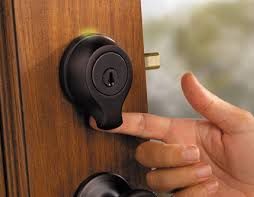Biometric Locks Installation
Biometric locks When it comes to safeguarding your property, traditional locks may no longer be enough to ensure optimal security. That’s where biometric locks come into play. Utilizing cutting-edge fingerprint authentication technology, biometric locks offer an advanced level of protection. In this article, we will delve into the world of biometric locks, exploring how they work, the advantages they offer, and how American Best Locksmith can assist you in securing your home or business.
Understanding Biometric Locks Using Fingerprints
Fingerprints have many elements to them, they include ridges or elevated lines of flesh which create the unique and various patterns of the fingerprint and they are separated by valleys. These ridges form all kinds of different patterns which include curves, arches, loops and much more. Minutiae are discontinuities in the ridges, which also come in different shapes and various forms such as bifurcations which are like forks and also there are crossovers that are more like intersections.

The basis of the print authentication is relies on a select amount of subset features from the entire print. There is a special formula that reduces the data collected on a fingerprint only to the information which is completely unique to that fingerprint alone. An example would be to perform a data collection only on a very specific type of series of ridges as we mentioned earlier. In other words, the entire data of the fingerprint is not stored, only a few key factors which represent that print is stored instead. And as we also mentioned before, this is quite different from the forensic meaning of fingerprint which usually requires an entire print.
Your average data file of a print is less than a 1000 bytes, this is used for either a one on one or a one to several verification methods and ordinarily takes just a few seconds. Forensic data files of prints are much larger, they reach over 250 kilo-bytes, and this is mainly due to the fact that it stores a complete fingerprint, and these files are used in large databases such as the FBI, CIA and other law enforcement agencies to allow one to many searches.
The Authentication Process
The actual operation of a fingerprint authentication is very easy. Initially the end-user would first have to submit a fingerprint sample to register in the system. The sensor will capture the prints image. This will be translated by the formula we mentioned earlier and only a few select features will be saved and stored. This procedure can be done either on a remote or local computer. On a biometric lock this is usually done locally. When the user wishes to gain entry from now on, all they would have to do is swipe their finger against a sensor which will in turn identify and match it with any of the data files stored, if a match is found, access will be granted. This process usually takes between 1 to two seconds.
Secure Your Property with American Best Locksmith
Biometric locks offer unparalleled security and convenience for residential, automotive, and commercial needs. As a trusted locksmith company, American Best Locksmith is here to assist you in implementing these advanced security measures. We specialize in a wide range of services and our highly experienced technicians offer essential keys and locks-related services for automobiles, residential and commercial properties, including but not limited to key replacements, lock repairs, and installation of cutting-edge locks and security systems, such as commercial locks and keypad operated locks.

Whether you reside in Philadelphia, PA, or anywhere across the country, our professional locksmith services are just a call away. We understand the importance of your security and provide reliable, efficient solutions to protect your property. Contact American Best Locksmith today and let us help you fortify your home or business with state-of-the-art biometric locks.

